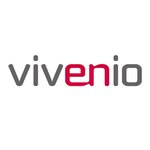Description

Airmeet

Whova
Comprehensive Overview: Airmeet vs Whova
Airmeet and Whova are both prominent platforms in the event management and virtual events industry, each offering unique tools and features designed to facilitate different types of events. Below is a comprehensive overview comparing these two platforms:
Airmeet
a) Primary Functions and Target Markets:
- Primary Functions:
- Virtual Event Hosting: Airmeet provides a platform for hosting virtual conferences, webinars, meetups, summits, and workshops.
- Networking Features: It includes extensive networking functionalities such as virtual lounges, social tables, and personalized chat to enhance attendee interaction.
- Engagement Tools: Features like Q&A, polls, and reaction emojis are included to improve audience engagement.
- Customization and Branding: Offers customization options for branding and event setup, catering to different themes and styles.
- Target Markets:
- Corporate Sector: Businesses that need to conduct meetings, training sessions, and webinars.
- Event Organizers: Companies/individuals organizing virtual or hybrid conferences.
- Educational Institutions: Schools and universities looking to hold virtual classes or workshops.
- Associations and Non-profits: Organizations aiming to engage their audiences with seminars and information sessions.
b) Market Share and User Base:
Airmeet has gained traction particularly in the corporate and educational sectors for holding engaging digital events. It has a sizable user base that includes both SMEs and larger corporations. The market for virtual events has been growing, and Airmeet is recognized among the top players but competes with several other platforms like Zoom, Hopin, and Microsoft Teams.
c) Key Differentiating Factors:
- Emphasis on Networking: Airmeet places a strong focus on networking with virtual tables and lounges, facilitating organic conversations and interactions.
- Event Customization: Offers robust customization options for events, which can be crucial for brand alignment and thematic consistency.
- User Experience: Known for an intuitive user interface designed to enhance both mobile and desktop accessibility.
Whova
a) Primary Functions and Target Markets:
-
Primary Functions:
- Event Management: Whova is primarily an event management software offering tools for event registration, agenda planning, and attendee management.
- Hybrid & Virtual Events: Supports hybrid events with a mix of in-person and virtual attendees.
- Engagement and Networking: Provides features like attendee networking, community board, live polling, and Q&A sessions.
- Analytics and Feedback: Offers analytics to gauge event performance and gather feedback through post-event surveys.
-
Target Markets:
- Conferences and Trade Shows: Organizers of large-scale conferences and industry trade shows.
- Academic Events: Universities and colleges for seminars, symposiums, and academic gatherings.
- Business Events: Corporate training, workshops, and team-building events.
b) Market Share and User Base:
Whova is well-established with a strong user base particularly among academic and professional conferences. Its market presence spans globally with a significant number of events hosted across various sectors, though it faces competition from Cvent, Eventbrite, and other event management platforms.
c) Key Differentiating Factors:
- Comprehensive Event Management: Whova's strength lies in end-to-end event management capabilities, including registration, agenda, and attendee engagement tools.
- Hybrid Focus: Offers specific features for hybrid event management that seamlessly integrate in-person and virtual components.
- Community Engagement: Provides community-building tools to facilitate year-round engagement, beyond just the event itself.
Comparison Summary
- Focus and Flexibility: Airmeet is more focused on virtual experiences and networking, ideal for fully digital events, whereas Whova offers more comprehensive tools for overseeing the entire event lifecycle, including hybrid events.
- User Engagement: Both platforms provide strong engagement features, but Airmeet’s unique approach to virtual networking can provide a distinctive experience for virtual event attendees.
- Market Adoption: While both have solid market penetration, Whova's heavy focus on conferences and comprehensive event management makes it a preferred choice for complex and larger-scale events, while Airmeet's adaptability to different virtual settings appeals to a broad range of industries seeking engaging virtual spaces.
Contact Info

Year founded :
2019
+1 541-745-8254
Not Available
United States
http://www.linkedin.com/company/airmeetcom

Year founded :
2013
+1 855-978-6578
Not Available
United States
http://www.linkedin.com/company/whova
Feature Similarity Breakdown: Airmeet, Whova
Airmeet and Whova are both event management platforms designed to facilitate virtual, hybrid, and in-person events. They offer a suite of features to enhance event organization and attendee engagement. Here’s a breakdown of their feature similarities and differences:
a) Core Features in Common
-
Virtual and Hybrid Event Support: Both platforms support virtual and hybrid events, offering solutions for remote attendees as well as on-site participants.
-
Networking Opportunities: They offer networking features such as virtual tables (Airmeet) or networking sessions (Whova), enabling attendees to connect and communicate.
-
Event Registration: Both platforms support registration management, including ticketing and attendee check-ins.
-
Agenda Management: Users can set up detailed event agendas, including sessions, speakers, and times.
-
Live Streaming and Recording: They provide live streaming capabilities and options to record sessions for later viewing.
-
Interactive Features: Features such as polls, Q&A, and live chats are available in both platforms to engage attendees during events.
-
Exhibitor and Sponsor Management: Tools for managing exhibitors and sponsors, including virtual booths, are present in both platforms.
-
Analytics and Reporting: Both Airmeet and Whova offer analytical tools to track attendee engagement and event performance, providing insights for organizers.
b) User Interface Comparison
-
Airmeet:
- Known for its sleek and modern interface, Airmeet focuses on creating a virtual ballroom experience. It uses a spatial design metaphor with tables and stages that mimic physical spaces.
- Navigation is generally intuitive, utilizing a clean layout that helps attendees easily find sessions and networking areas.
-
Whova:
- Whova has a comprehensive interface that integrates all aspects of event management, from registration to post-event follow-up.
- It offers a more traditional dashboard-style interface, which can initially seem more complex but provides extensive detail and utility, especially appreciated by event organizers.
c) Unique Features
-
Airmeet:
- Social Lounge: Airmeet’s standout feature is its "Social Lounge," where attendees can join tables for discussions, mimicking a physical networking environment.
- Fluid Space Movement: It allows attendees to move between sessions and networking areas fluidly, enhancing the conference feel of events.
- Backstage and Onstage Management: Offers robust tools for managing speakers and content flow, giving hosts a "backstage" experience before going live.
-
Whova:
- Community Board: Whova’s community board feature enhances interaction beyond standard Q&A by facilitating topic-based discussions.
- Smart Profile and Networking Suggestion: Whova offers AI-driven networking suggestions to connect attendees with similar interests or professions.
- In-app Bulletin Board: This feature serves as an information hub for announcements, ensuring participants are always up to date.
In summary, while Airmeet and Whova offer a range of similar features essential for virtual and hybrid events, they distinguish themselves through unique engagement tools and differing user interface philosophies. Airmeet excels with its immersive and spatial design, fostering networking through virtual tables, whereas Whova provides a feature-rich environment with robust community interaction tools and smart networking capabilities.
Features

Virtual Events
Customization Options
Analytics and Reporting
Event Management
Attendee Engagement
Analytics and Reports
Engagement Tools

Event Management
Exhibitor and Sponsor Management
Analytics and Reporting
Mobile Access
Attendee Engagement
Best Fit Use Cases: Airmeet, Whova
Airmeet and Whova are both platforms designed to facilitate virtual events, but they have distinct features and strengths that make them better suited for different types of businesses, projects, and scenarios.
a) Airmeet
Best Fit Use Cases:
-
Professional Conferences and Trade Shows:
- Industry Focus: Tech, Healthcare, Finance, and Education.
- Reason: Airmeet provides robust features for networking, including virtual tables and lounges, which are ideal for professional gatherings where networking is a priority.
-
Corporate Events and Town Halls:
- Industry Focus: Large enterprises and multinational companies.
- Reason: Its interactive features and scalability make it ideal for large-scale corporate communications.
-
Webinars and Product Launches:
- Industry Focus: SaaS and consumer tech companies.
- Reason: With high-quality streaming and engagement tools like Q&A and polls, Airmeet is well-suited for engaging product demonstrations and webinars.
-
Online Training and Workshops:
- Industry Focus: Educational institutions and online learning platforms.
- Reason: The platform supports interactive learning environments with workshops and breakout sessions.
Company Size:
- Medium to Large Enterprises: Given its comprehensive feature set and price point, Airmeet is typically favored by larger organizations with sufficient budgets for virtual events.
b) Whova
Best Fit Use Cases:
-
Community Events and Non-Profit Gatherings:
- Industry Focus: Non-profit organizations, local community groups.
- Reason: Whova’s cost-effectiveness and user-friendly interface make it accessible for events with limited budgets.
-
Academic Conferences and Symposia:
- Industry Focus: Academic institutions, research organizations.
- Reason: Features like agenda management, attendee engagement, and the ability to handle complex conference schedules make Whova ideal for academic settings.
-
Workshops and Training Sessions:
- Industry Focus: Training organizations, HR departments.
- Reason: The platform offers tools for interactive sessions and networking opportunities suited for educational purposes.
-
Festivals and Cultural Events:
- Industry Focus: Arts and entertainment organizations.
- Reason: Whova handles multi-day events with varied activities easily, supporting diverse programming needs.
Company Size:
- Small to Medium-Sized Businesses: Whova is popular among smaller organizations due to its affordability and ease of use, allowing these businesses to host professional-looking events without extensive resources.
How They Cater to Different Industry Verticals or Company Sizes:
-
Airmeet focuses on delivering high-end features that cater to verticals where networking and professional engagement are paramount. It works well for larger companies that require robust functionality and support for sizable events. Its platform complexity can be more advantageous for industries where attendee experience and interaction need to resemble in-person events.
-
Whova is more versatile in terms of budget-friendliness and is often a go-to for smaller companies or organizations with limited event budgets. It strikes a balance between functionality and cost, making it suitable for a range of industries looking to maximize engagement with limited resources. Whova is particularly appealing to verticals that need extensive agenda planning and attendee management features in an affordable package.
In summary, choosing between Airmeet and Whova largely depends on the specific needs of the event, the industry focus, the size of the organization, and the budget available. Airmeet suits larger, more complex professional events, while Whova is adaptable for smaller, budget-conscious gatherings across various sectors.
Pricing

Pricing Not Available

Pricing Not Available
Metrics History
Metrics History
Comparing teamSize across companies
Conclusion & Final Verdict: Airmeet vs Whova
When evaluating virtual and hybrid event platforms like Airmeet and Whova, it's essential to consider various aspects such as features, user experience, pricing, and support to determine which offers better overall value. Here's a comprehensive breakdown:
Conclusion and Final Verdict
a) Best Overall Value
After considering all factors, Airmeet generally offers the best overall value for organizations that prioritize an engaging virtual experience with robust networking capabilities. However, if the main focus is on event management tools and attendee engagement, Whova might be more beneficial.
b) Pros and Cons
Airmeet:
Pros:
- Strong Networking Features: Airmeet excels in networking with features like virtual tables, lounges, and chat capabilities.
- Immersive Experience: Offers a highly interactive and immersive virtual experience with features such as polls, Q&A, and stage management.
- User-Friendly Interface: The platform is relatively easy to navigate for both organizers and attendees, fostering engagement.
Cons:
- Complex Configuration: Some users find the initial setup and backend configuration to be somewhat complex.
- Cost: Depending on the features chosen, Airmeet can be pricey, especially for smaller events or organizations with limited budgets.
Whova:
Pros:
- Comprehensive Event Management: Whova offers strong event management features, including registration, agenda management, and logistics support.
- Versatile Engagement Tools: Includes versatile features like surveys, polling, and live Q&A to enhance attendee engagement.
- Good Customer Support: Known for its reliable customer service and support throughout the event lifecycle.
Cons:
- Limited Real-Time Interaction: While it offers good engagement tools, real-time interaction might not be as dynamic or visually appealing as Airmeet.
- Interface: Some users report a slightly less modern interface compared to its competitors, which may affect the user experience.
c) Recommendations for Users Deciding Between Airmeet and Whova
-
Event Type and Goals:
- If your primary goal is to create an engaging and network-oriented virtual conference, Airmeet is likely the better choice due to its focus on interaction and networking.
- For events heavily focused on logistics, registration, and attendee management, where face-to-face interaction is not the core component, Whova would be more appropriate.
-
Budget Considerations:
- Organizations should assess the cost versus value offered by each platform and align it with their budget constraints. Airmeet might require a higher investment than Whova, particularly for smaller events.
-
Integration Needs:
- Consider existing tools and systems that need integration. Whova has robust features for hybrid events management that may suit organizers looking for seamless integration with other systems.
-
Long-Term Requirements:
- Assess long-term membership or user engagement needs. If continuous community-building is a critical aspect beyond the event itself, Airmeet could be more effective due to its structured networking functions.
Ultimately, the decision between Airmeet and Whova depends on the specific needs, priorities, and resources of the organization or event team. Each platform has its unique strengths, so users must align these with their event objectives to make an informed choice.
Add to compare
Add similar companies



